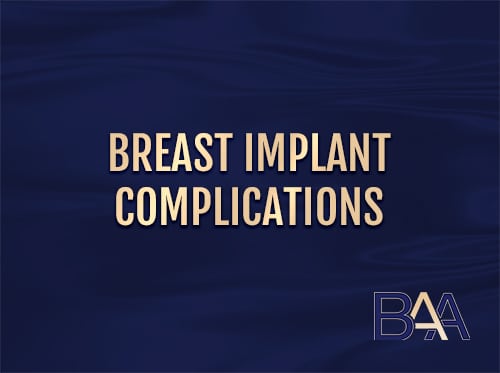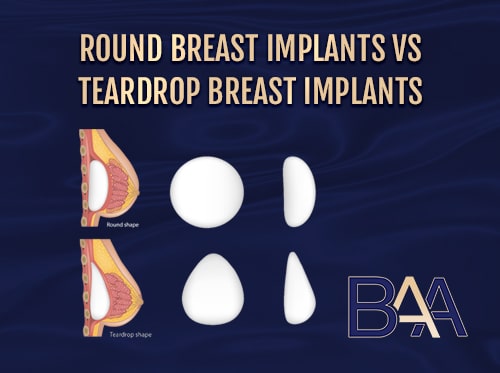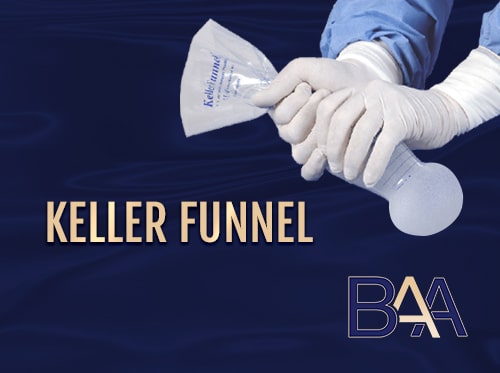Are Textured Breast Implants Safe?
It’s no secret that surgical procedures have their fair share of complications. So, when it comes to breast augmentation, patients are rightfully concerned about which implant to choose and its potential downsides. Textured breast implant is one of the options available for those seeking breast augmentation in Sydney.
But the burning question on every patient’s mind is: are these textured breast implants actually safe? We’ll take you through every essential detail of this type of implant. So, if you’re considering textured implants for your breast augmentation, let’s dive right into it.

Breast Implant and Cancer: What you need to Know

One of the complications associated with breast augmentation surgery is the possibility of developing cancer in later years. Textured breast implants are linked with BIA-ALCL, (Breast implant-associated anaplastic large cell lymphoma). This means that patients with textured implants are at risk of getting this rare cancer.
The risk of getting BIA-ALCL Varies widely between countries, studies, and implants. In one study that included 104 patients, the risk for developing BIA-ALCL ranged from 1 in 1947 breast implants for silimed polyurethane devices to 1 in 36,730 breast implants for siltex imprinted textured devices.
The risk is significant, especially considering that breast implants stay in the body for a long time. That is why the Australian government banned the implants.
Types of Textured Breast Implants
Textured breast implants are a type of breast implant with a rough surface like sandpaper. The implant’s outer shell is silicone, with the inside containing saline or silicone gel. Manufacturers of breast implants developed Textured breast implants to reduce the risk of capsular contracture.
Capsular contracture occurs when the tissue around the capsule hardens. The rough outer surface of the implant attaches to the capsule around the breast tissue, preventing the implant from moving around the breast pocket.
Textured implants are available in two types;
- Micro-textured
- Macro-textured breast implants
To create the rough surface, the implants have cavities, or shapes with varying diameters and dept engraved onto their surface. The difference between the two types of textured implants is their feel.
Macro-textured breast implants contain larger patterns compared to micro-textured implants. The roughness increases the adherence of the breast tissue to the implant, reducing the implant placement.
However, TGA, Therapeutic Goods Administration, banned the sale and use of macro-textured breast implants in Australia. This is after the implants had a higher risk of causing BIA-ALCL. Therefore, without authorisation, you cannot import, export, supply, or use the implants in Australia.
How do Textured Breast Implants Differ from Smooth Breast Implants?

Despite the plastic surgeons using both implants (smooth and micro-textured) for breast augmentation, the two implants differ. Below are the key differences between textured and smooth breast implants.
Unlike textured breast implants with a rough outer shell, smooth breast implants contain a smooth, shiny, slippery silicone rubber shell. The shell contains saline or silicone gel, available in different shapes and sizes.
Smooth breast implants don’t attach to the surrounding breast tissue and move freely inside the capsule. On the other hand, textured implants attach to the capsule, restricting the movement of the implant. The movement of smooth implants causes a higher risk of capsular contracture and a higher risk of malposition.
Textured implants feel firmer vs the feel of smooth implants.
Since the smooth implants move around the capsule, there’s less friction, reducing the risk of rupture lasting longer than textured implants. In addition, smooth implants take shorter healing time, have less wrinkling and rippling, and provide more surgery options than their counterparts.
It’s important to note you cannot tell the difference between the two implants when placed under the chest tissue.
Who is Suitable for Textured Breast Implants?

Plastic surgeons use micro-textured breast implants since their rough surfaces attach to the breast tissue, holding the implant firmly. This makes the implant suitable for those undergoing reconstruction due to mastectomy.
Also, textured implants are ideal for women with thin or insufficient breast tissue due to their natural feel. In addition, textured implants are suitable for women with a higher risk of capsular contracture.
BIA-ALCL
Breast implant-associated anaplastic large cell lymphoma is rare cancer associated with textured breast implants. It is a cancer of the immune system and not a breast cancer. BIA-ALCL is a non-Hodgkin lymphoma found in the fluid or scar tissue surrounding the implant. The cancer has a probability of spreading to other parts of the body, affecting the immune system. There are low chances of getting BIA-ALCL, but the chances are not zero.
Despite textured breast implants association with BIA-ALCL, there’s insufficient information to show the cause. However, some studies and plastic surgeons note that one of the possible causes is a bacterial infection. They believe the rough surface of textured breast implants creates a surface for bacteria to attach. The higher the texturing, the higher the risk of getting ALCL. This has led most countries, including Australia, to ban macro-textured breast implants.
The symptoms of BIA-ALCL can occur several years after breast augmentation surgery. The symptoms include persistent swelling, pain, or the presence of a lump or mass around the breast implant area. If you experience these symptoms, consulting a qualified FRACS surgeon is the first step. A test to determine the problem often reveals fluid collection around the implant.
BIA-ALCL is treatable after diagnosis. The treatment involves surgery to extract the implant and the surrounding tissue. Radiation and chemotherapy can also treat BIA-ALCL.
Other Risks Associated with Textured Breast Implants
Apart from BIA-ALCL, textured breast implants are associated with other risks. Below are some of the most common risks associated with textured breast implants.
- Implant rupture: One of the risks of textured implants is the higher probability of implant rupture. The rough outer shell may stress the capsule, causing tears, leaks, and implant rupture. Implant rupture causes pain and changes in the breast shape. In addition, it may lead to more complications if left untreated.
- Recovery time: Textured breast implants take longer operation time and healing time.
- Capsular contracture: Manufacturers developed textured breast implants to reduce the risk of capsular contracture. Despite this, the implants can still be associated with capsular contracture.
- Another risk associated with textured implants is the difficulty in detecting breast cancer. The implant’s rough surface creates shadows when viewed under a mammogram which may obscure any tumours on the breast.
TGA Recommendation about Textured Breast Implants
Australia’s Therapeutic Goods Administration (TGA) banned using specific types of textured breast implants. This was after a thorough review regarding the safety of the implants and the substantial risk of causing BIA-ALCL.
Any patients must ensure they monitor any changes to the breasts and get an evaluation from an experienced plastic surgeon. In addition, the patient should seek immediate medical attention if they feel any lumps, swelling, or pain around the implant area.
Another TGA’s recommendation is for medical practitioners to inform their patients of the risks involved in breast augmentation before performing any procedure. They should discuss each implant’s advantages and disadvantages and address the patient’s concerns. In addition to the risks involved in the process, the health practitioner should notify the patient of the BIA-ALCL risk associated with textured implants.
Medical practitioners should allow patients to make individual and informed decisions.
People Also Ask
Below are some frequently asked questions regarding the safety of textured breast implants.
My Textured Implants are not Among Those Banned by TGA. Should I be Concerned?
The textured implants not banned by TGA are less likely to cause BIA-ALCL. However, you should stay alert, monitor any changes, and seek medical advice from a qualified practitioner.
Can I Get Screened for BIA-ALCL?
Yes! MRI screening helps to monitor the condition of the breast implant. It’s essential to conduct a routine examination. If you experience swelling, rashes, pain, or any other unusual symptoms around the breast, seek medical attention.
Can Textured Tissue Expanders Increase the Risk of Getting BIA-ALCL?
The new TGA recommendations have banned tissue expanders with a particular texture. Tissue expanders usage is 6 months. However, there’s limited information to show whether temporary exposure may cause BIA-ALCL.
Can an ultrasound detect BIA-ALCL?
Yes, ultrasound can detect BIA-ALCL with high sensitivity (84%). When performing ultrasound exams, doctors typically look for signs of fluid collection between the breast implant and capsule and any septa that may exist. If a mass is identified, it usually features solid characteristics: hypoechoic hue and well-circumscribed contours without hypervascularity.
References
- Kadin, M. E., Deva, A. K., Xu, H., Morgan, J., Khare, P., MacLeod, R. A., Van Natta, B. W., Adams, W. M., Brody, G. S., & Epstein, A. L. (2016). Biomarkers Provide Clues to Early Events in the Pathogenesis of Breast Implant-Associated Anaplastic Large Cell Lymphoma. Aesthetic Surgery Journal, 36(7), 773–781.
- Loch-Wilkinson, A., Beath, K., Magnusson, M. R., Cooter, R. D., Shaw, K. L., French, J. C., Vickery, K., Prince, H. M., & Deva, A. K. (2020). Breast Implant-Associated Anaplastic Large Cell Lymphoma in Australia: A Longitudinal Study of Implant and Other Related Risk Factors. Aesthetic Surgery Journal, 40(8), 838–846.
- Nelson, J. A., Dabic, S., Mehrara, B. J., Cordeiro, P. G., Disa, J. J., Pusic, A. L., Matros, E., Dayan, J. H., Allen, R. J., Coriddi, M., Polanco, T. O., Shamsunder, M. G., Wiser, I., Morrow, M., Dogan, A., Cavalli, M., Encarnacion, E., Lee, M., & McCarthy, C. M. (2020). Breast Implant-associated Anaplastic Large Cell Lymphoma Incidence. Annals of Surgery, 272(3), 403–409.
- Adams, W. M., Culbertson, E., Deva, A. K., Magnusson, M. R., Layt, C., Jewell, M. L., Mallucci, P., & Hedén, P. (2017). Macrotextured Breast Implants with Defined Steps to Minimize Bacterial Contamination around the Device: Experience in 42,000 Implants. Plastic and Reconstructive Surgery, 140(3), 427–431.
- Chiemi, J. A., & Kelishadi, S. S. (2022b). A Rationale for Micro-textured Breast Implant Augmentation. Aesthetic Surgery Journal, 4.
- Maxwell, G. P., Scheflan, M., Spear, S. L., Nava, M. B., & Hedén, P. (2014). Benefits and Limitations of Macrotextured Breast Implants and Consensus Recommendations for Optimizing Their Effectiveness. Aesthetic Surgery Journal, 34(6), 876–881.



